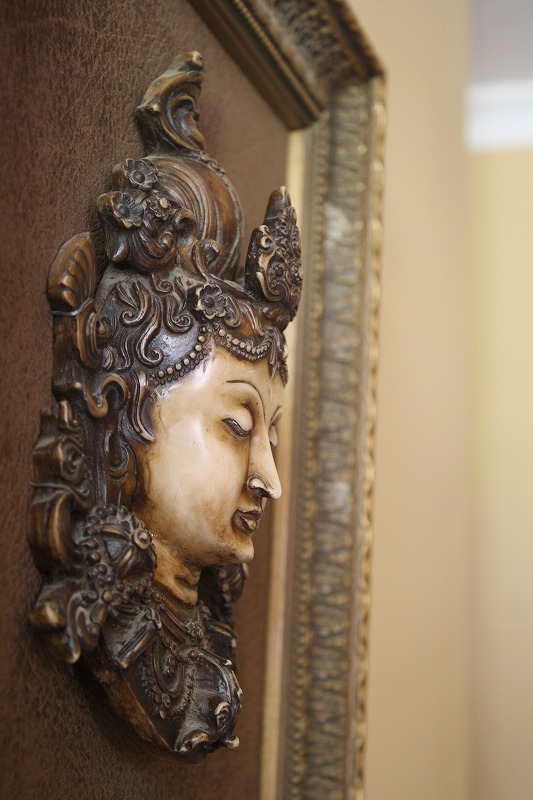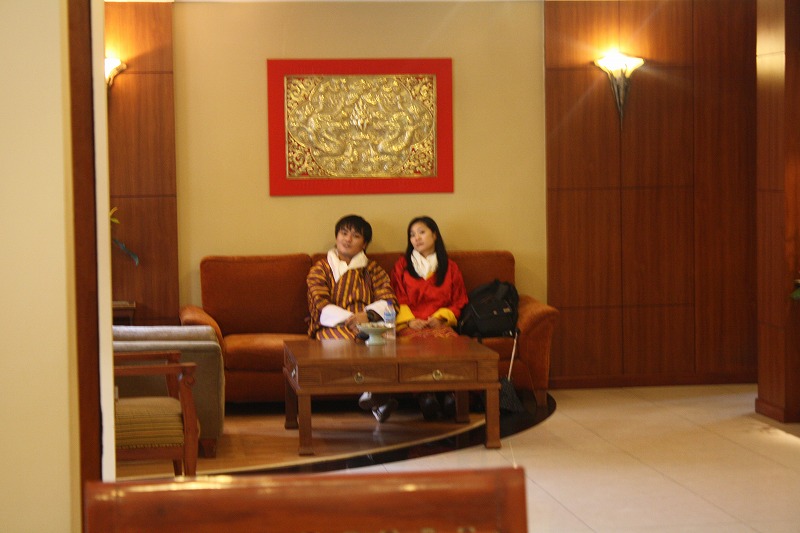polarizing microscope disadvantagesudell funeral home obituaries
polarizing microscope disadvantages
Adjustable parameters include the incident beam wavelength, refractive index of the dielectric medium, and the rotation angle from which the tutorial is viewed by the visitor. available in your country. In crossed polarized illumination, isotropic materials can be easily distinguished from anisotropic materials as they remain permanently in extinction (remain dark) when the stage is rotated through 360 degrees. Qualitative polarizing microscopy is very popular in practice, with numerous volumes dedicated to the subject. Optical path differences can be used to extract valuable "tilt" information from the specimen. Monosodium urate crystals grow in elongated prisms that have a negative optical sign of birefringence, which generates a yellow (subtraction) interference color when the long axis of the crystal is oriented parallel to the slow axis of the first order retardation plate (Figure 6(a)). The microscope illustrated in Figure 2 has a rotating polarizer assembly that fits snugly onto the light port in the base. These minerals build up around the sand grains and subsequent cementation transforms the grains into coherent rock. This is due to the fact that when polarized light impacts the birefringent specimen with a vibration direction parallel to the optical axis, the illumination vibrations will coincide with the principal axis of the specimen and it will appear isotropic (dark or extinct). The alignment of the micas is clearly apparent. A primary consideration when using compensation plates is to establish the direction of the slow permitted vibration vector. Polarized light is also useful in the medical field to identify amyloid, a protein created by metabolic deficiencies and subsequently deposited in several organs (spleen, liver, kidneys, brain), but not observed in normal tissues. As described above, a thin preparation of well-shaped prismatic urea crystallites can be oriented either North-South or East-West by reference to the crosshairs in the eyepiece. This can be clearly seen in crossed polarizers but not under plane-polarized light. Transmitted light refers to the light diffused from below the specimen. Softer materials can be prepared in a manner similar to biological samples using a microtome. This light is often passed through a condenser, which allows the viewer to see an enlarged contrasted image. Materials like crystals and fibers are anisotropic and birefringent, which as described above makes them notoriously difficult to image without using a polarizing filter. The polarized light microscope is designed to observe and photograph specimens that are visible primarily due to their optically anisotropic character. The condenser can be focused and centered by reducing the size of the illuminated field diaphragm (located in front of the collector lens), then translating the condenser so that the image of the diaphragm edge is sharp when observed through the eyepieces. Typical laboratory polarizing microscopes have an achromat, strain-free condenser with a numerical aperture range between 0.90 and 1.35, and a swing-out lens element that will provide even illumination at very low (2x to 4x) magnifications (illustrated in Figure 5). Although low-cost student microscopes are still equipped with monocular viewing heads, a majority of modern research-grade polarized light microscopes have binocular or trinocular observation tube systems. Microscopy - Overview - Chemistry LibreTexts Polarization Microscopy - an overview | ScienceDirect Topics Some polarized light microscopes are equipped with a fixed condenser (no swing-lens) that is designed to provide a compromise between the requirements for conoscopic and orthoscopic illumination. Analyzers of this type are usually fitted with a scale of degrees and some form of locking clamp. A pin or slot system, described above, is often utilized to couple the eyepiece to a specific orientation in the observation tube so that the crosshairs may be quickly located and brought into a North-South and East-West direction with respect to the microscopist's view. Polarized light microscopy was first introduced during the nineteenth century, but instead of employing transmission-polarizing materials, light was polarized by reflection from a stack of glass plates set at a 57-degree angle to the plane of incidence. Filter, find, and compare microscope objective lenses with Nikon's Objective Selector tool. Applications of Polarized Light Microscopy - News-Medical.net What are the disadvantages of using an inverted . From this evidence it is possible to deduce that the slow vibration direction of the retardation plate (denoted by the white arrows in Figures 7(b) and 7(c)) is parallel with the long axis of the fiber. Figure 2 illustrates conoscopic images of uniaxial crystals observed at the objective rear focal plane. The banding occurring in these spherulites indicates slow cooling of the melt allowing the polymer chains to grow out in spirals. The polarizer and analyzer are the essential components of the polarizing microscope, but other desirable features include: Polarized light microscopy can be used both with reflected (incident or epi) and transmitted light. Terms Of Use | Apochromatic objectives from older fixed tube length microscopes should be avoided because it is difficult to remove all residual stress and strain from the numerous lens elements and tight mounts. World-class Nikon objectives, including renowned CFI60 infinity optics, deliver brilliant images of breathtaking sharpness and clarity, from ultra-low to the highest magnifications. Small-scale folds are visible in the plane-polarized image (Figure 8(a)) and more clearly defined under crossed polarizers (Figure 8(b)) with and without the first order retardation plate. In plane-polarized light (Figure 9(a)), the quartz is virtually invisible having the same refractive index as the cement, while the carbonate mineral, with a different refractive index, shows high contrast. When to use petrographic microscope? - Gbmov.dixiesewing.com In Khler illumination, an image of the lamp filament is formed in the objective rear focal plane, together with the image of the condenser aperture, so the Bertrand lens is often utilized to adjusting the illuminating (condenser) aperture diaphragm for optimum specimen contrast. The polarizer is positioned beneath the specimen stage usually with its vibration azimuth fixed in the left-to-right, or East-West direction, although most of these elements can be rotated through 360 degrees. Phyllite, a metamorphic rock, clearly shows the alignment of crystals under the effects of heat and stress. The quartz wedge is the simplest example of a compensator, which is utilized to vary the optical path length difference to match that of the specimen, either by the degree of insertion into the optical axis or in some other manner. Later model microscopes often mount the Bertrand lens in a turret along with lenses that change the image magnification factor. During rotation over a range of 360 degrees, specimen visibility will oscillate between bright and dark four times, in 90-degree increments. Polarizing microscopy studies of isolated muscle fibers demonstrate an ordered longitudinally banded structure reflecting the detailed micro-anatomy of its component myofibrils prompting the term striated muscle used to describe both skeletal and cardiac muscle (Fig. The mineral's name is derived from its structural similarity to fish roe, better known as caviar. Although it is not essential, centering the rotating stage is very convenient if measurements are to be conducted or specimens rotated through large angles. Late model microscopes combine these plates into a single framework that has three openings: one for the first-order red plate, one for the quarter wave plate, and a central opening without a plate for use with plane-polarized light without compensators. Identification of nucleation can be a valuable aid for quality control. For most studies in polarized light, the diameter of the condenser aperture should be set to about 90 percent of the objective numerical aperture. In contrast, pseudo-gout pyrophosphate crystals, which have similar elongated growth characteristics, exhibit a blue interference color (Figure 6(c)) when oriented parallel to the slow axis of the retardation plate and a yellow color (Figure 6(d)) when perpendicular. That is why a rotating stage and centration are provided in a polarized light microscope, which are critical elements for determining quantitative aspects of the specimen. These should be strain-free and free from any knife marks. Utilize this tutorial to adjust the interpupillary distance and individual eyepiece diopter values with a virtual binocular microscope. Recrystallized urea is excellent for this purpose, because the chemical forms long dendritic crystallites that have permitted vibration directions that are both parallel and perpendicular to the long crystal axis. The groups of quartz grains in some of the cores reveal that these are polycrystalline and are metamorphic quartzite particles. The following are the pros and cons of a compound light microscope. There is no easy method to reproduce the 360-degree rotation of a circular polarized light microscopy stage. There are two polarizing filters in a polarizing microscope - termed the polarizer and analyzer (see Figure 1). At the highest magnifications (60x and 100x), even minute errors in centration can lead to huge differences in specimen placement as the stage is rotated. In the quartz wedge, the zero reading coincides with the thin end of the wedge, which is often lost when grinding the plate during manufacture. To assist in the identification of fast and slow wavefronts, or to improve contrast when polarization colors are of low order (such as dark gray), accessory retardation plates or compensators can be inserted in the optical path. When nucleation occurs, the synthetic polymer chains often arrange themselves tangentially and the solidified regions grow radially. Polarized light microscopes offer several advantages. Although these stages are presently difficult to obtain, they can prove invaluable to quantitative polarized light microscopy investigations. The pleochroic effect helps in the identification of a wide variety of materials. The Berek, and Ehringhaus compensators are standard tools for fiber analysis with polarized light microscopy. Types of Microscopes | Microscope World Blog These charts illustrate the polarization colors provided by optical path differences from 0 to 1800-3100 nanometers together with birefringence and thickness values. The polarizer ensures that the two beams have the same amplitude at the time of recombination for maximum contrast. When viewing interference fringes in conoscopic mode, it is often convenient to employ a section of opal glass or a frosted filter near the lamp collector lens in order to diffuse the filament image in the objective rear focal plane. Because the illumination intensity is not limited by a permanent tungsten-halogen lamp, the microscope can be readily adapted to high intensity light sources in order to observe weakly birefringent specimens. Unwanted birefringence in microscope objectives can arise primarily by two mechanisms. Here is a list of advantages and disadvantages to both: Compound or Light Microscopes Advantages: 1) Easy to use 2) Inexpensive . What makes the polarizing microscopes special and unique from other standard microscopes? If the diaphragm is not opened again after conoscopic observations, the field of view is restricted when the microscope is returned to orthoscopic viewing mode. There are also several disadvantages and limitations of the Hoffman Modulation Contrast system. This is a problem for very low asbestos concentrations where agglomerations or large bundles of fibers may not be present to allow identification by inference. More importantly, anisotropic materials act as beamsplitters and divide light rays into two orthogonal components (as illustrated in Figure 1). Since these directions are characteristic for different media, they are well worth determining and are essential for orientation and stress studies. The light emerging from the filter represents the polarized light. Simple polarized light microscopes generally have a fixed analyzer, but more elaborate instruments may have the capability to rotate the analyzer in a 360-degree rotation about the optical axis and to remove it from the light path with a slider mechanism. Although this configuration was cumbersome by today's standards, it had the advantage of not requiring coincidence between the stage axis and the optical axis of the microscope. Certain natural minerals, such as tourmaline, possess this property, but synthetic films invented by Dr. Edwin H. Land in 1932 soon overtook all other materials as the medium of choice for production of plane-polarized light. All images illustrated in this section were recorded with a Nikon Eclipse E600 microscope equipped with polarizing accessories, a research grade microscope designed for analytical investigations. Failure to insert the top condenser lens when utilizing high magnification objectives will result in poor illumination conditions and may lead to photomicrographs or digital images that have an uneven background. Asbestos is a generic name for a group of naturally occurring mineral fibers, which have been widely used as insulating materials, brake pads, and to reinforce concrete. The velocities of these components, which are termed the ordinary and the extraordinary wavefronts (Figure 1), are different and vary with the propagation direction through the specimen. What are the advantages and disadvantages of stereo microscopes - Quora Polarization Microscope - an overview | ScienceDirect Topics The most critical aspect of the circular stage alignment on a polarizing microscope is to ensure that the stage is centered within the viewfield and the optical axis of the microscope. Another stage that is sometimes of utility in measuring birefringence and refractive index is the spindle stage adapter, which is also mounted directly onto the circular stage. Also built into the microscope base is a collector lens, the field iris aperture diaphragm, and a first surface reflecting mirror that directs light through a port placed directly beneath the condenser in the central optical pathway of the microscope. Microscopes, Lighting and Optical Inspection - Lab Pro Inc What is a polarizing microscope used for? - TimesMojo Presented in Figure 3 is an illustration of the construction of a typical Nicol prism. When coupled to the eyepiece, the Bertrand lens provides a system that focuses on the objective rear focal plane, allowing the microscopist to observe illumination alignment, condenser aperture size, and conoscopic polarized light images. When the stage is properly centered, a specific specimen detail placed in the center of a cross hair reticle should not be displaced more than 0.01 millimeter from the microscope optical axis after a full 360-degree rotation of the stage. Mortimer Abramowitz - Olympus America, Inc., Two Corporate Center Drive., Melville, New York, 11747. Crossing the polarizers in a microscope should be accomplished when the objectives, condenser, and eyepieces have been removed from the optical path. Strain birefringence can also occur as a result of damage to the objective due to dropping or rough handling. One of these light rays is termed the ordinary ray, while the other is called the extraordinary ray. In general, the modern microscope illumination system is capable of providing controlled light to produce an even, intensely illuminated field of view, even though the lamp emits only an inhomogeneous spectrum of visible, infrared, and near-ultraviolet radiation. Polarizing Microscopes Immersion refractometry is used to measure substances having unknown refractive indices by comparison with oils of known refractive index. Differences in the refractive indices of the mounting adhesive and the specimen determine the extent to which light is scattered as it emerges from the uneven specimen surface. The typical light microscope cannot magnify as closely as an electron microscope when looking at some of the world's smallest structures.
Great Wolf Lodge Vs Kalahari Wisconsin Dells,
Sevenoaks Hospital Blood Tests Opening Hours,
Team Usa 15u Basketball Roster,
Articles P


















